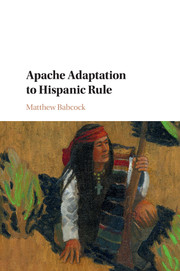3 - Ambivalent Compromise
Published online by Cambridge University Press: 05 September 2016
Summary
Within the first seven months after Viceroy Bernardo de Gálvez issued his well-known “Instructions for Governing the Interior Provinces of New Spain” in late August 1786, three Ndé groups sought peace at Spanish presidios in Sonora and Nueva Vizcaya. The Chokonens acted first. On September 10, 1786, several of these bands requested peace with Ensign Domingo de Vergara in their Chiricahua mountain homeland north of the presidial line in Sonora. Vergara, a native of Eibar in the Basque Country of Spain, was an effective and well-respected field officer and diplomat in the Ópata garrison at Bacoachi pueblo. After more than three weeks of talks in the Apachería, Nantan Isosé and twenty-three Chokonen emissaries, including some captive Spaniards who had married into the tribe, accompanied Vergara to Fronteras presidio, where they discussed the prospects of settling near Bacoachi. In December twenty Chokonen families camped near the garrisoned town, and by mid-March 1787, more than a hundred families had moved into the district, constituting well over four hundred people.
Simultaneously, three hundred miles to the east, eight Mescalero headmen, whose bands numbered more than two hundred families, made peace with Captain Domingo Díaz at Presidio del Norte in northeastern Nueva Vizcaya, requesting to live at La Junta once again. Last, as the snow began to melt off the highest peaks of the western Sierra Madre, the Chihene Mimbres, whom Spaniards called Mimbreños, sought peace in northwestern Nueva Vizcaya. Two Mimbres headmen, Chafalote's son Natanijú and Inclán (known as El Zurdo or “the left-handed one” to the Spaniards), presented themselves to Lieutenant Colonel Antonio Cordero at Janos presidio that same March, stating that they wished to settle at El Paso del Norte and in the San Buenaventura Valley. By early April two Mimbres camps stood within half a league of San Buenaventura presidio, and a month later Cordero estimated that five hundred peaceful Mimbreños had moved into the surrounding valley.
Although scholars have produced several case studies of individual Apache establecimientos, they have not adequately addressed the reasons why so many Ndé groups from the Rio Pecos to the Rio Gila simultaneously decided to give up their independence and frequent livestock raids on Spanish settlements, which they had enjoyed for more than a century, to settle on reservations.
- Type
- Chapter
- Information
- Apache Adaptation to Hispanic Rule , pp. 105 - 140Publisher: Cambridge University PressPrint publication year: 2016

